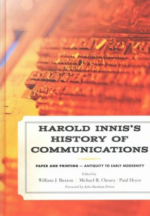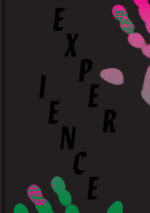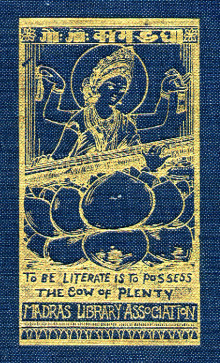Here are some links relevant to the material reality of cognition, books. and communication.
 A Review of Harold Innis’s History of Communications: Paper & Printing- Antiquity to Early Modernity (2015) http://bitly.com/2ge4ccn
A Review of Harold Innis’s History of Communications: Paper & Printing- Antiquity to Early Modernity (2015) http://bitly.com/2ge4ccn
An edited version of the unpublished project that “Innis assembled during the last dozen or so years of his life.” From the review: “Recounting that the first three chapters were meant to move from the Near East to Europe and to focus on the materials on which texts were written (specifically clay, papyrus, and parchment), our editorial trio delineates how Innis’s overall intention was to trace the history of writing materials up to and including the twentieth century. With the remainder of the volume outlining how paper migrated from China to Europe, they emphasize Innis’s analysis of how this process thus “set the stage for the epic battle between parchment and paper, culminating in the triumph of paper culture, as linked to printing and publishing, as well as a host of institutions and practices they underpinned” “
 Experience: Culture, cognition, and the common sense | MIT Press (2016) http://bitly.com/2hrN1Z7
Experience: Culture, cognition, and the common sense | MIT Press (2016) http://bitly.com/2hrN1Z7
From the publisher: “The sensory experience of the book as a physical object resonates with the intellectual experience of the book as a container of ideas… Experience convenes a conversation with artists, musicians, philosophers, anthropologists, historians, and neuroscientists, each of whom explores aspects of sensorial and cultural realms of experience. The texts include new essays written for this volume and classic texts by such figures as William James and Michel Foucault. The first publication from MIT’s Center for Art, Science, & Technology, Experience approaches its subject through multiple modes.”
 Cover Design in Dangerous Times: An Interview with Peter Mendelsund @LAReviewofBooks http://bitly.com/2hngKS1
Cover Design in Dangerous Times: An Interview with Peter Mendelsund @LAReviewofBooks http://bitly.com/2hngKS1
From the interview: “There’s been a kind of retrenching around the physical book in the age of digital. There was a moment where we thought it would go away, and then we all rallied around the physical book assets. One of those assets is its materiality as an object, that it can be a beautiful thing, that it can have this beautiful paratextual space in which all this stuff happens. The cover is a meeting place for all these different vectors.”





